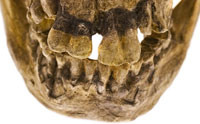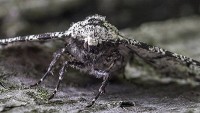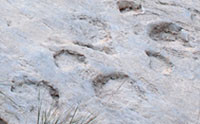Secular scientists have told incredible stories for over a century about how fossil teeth supposedly support the idea that humans evolved from primates. A lack of knowledge about tooth development has provided fertile ground for wild speculations about evolving tooth sizes, skull shapes, foot shapes, and even life habits. A new report changes all that conjecture. More… …read more Read more here: icr.org
By Devon Spencer, DVM As researchers sequence the DNA of more organisms, they find species (like the red wolf) they called unique physically are not so unique genetically. …read more Read more here: AIG Daily
Why evolutionists try to explain such chemistry wouldn’t exist until over 100 million years later. …read more Read more here: creation.com
The idea that plant breeding supports evolution doesn’t stand up to scrutiny. …read more Read more here: creation.com
The incredible complexity of feathers continues to puzzle evolutionists. …read more Read more here: creation.com
By Jake Hebert This paper, the first in a series, demonstrates that much of the Hays et al. paper, as originally presented, is invalid. …read more Read more here: AIG Daily
The earth is a ‘privileged planet’ and was specially created to support life. …read more Read more here: creation.com
Sneak peek of latest Creation magazine. The 2015 Nobel Prize for Chemistry highlights that DNA would be useless without the repair mechanisms to preserve it. …read more Read more here: creation.com
By Dr. Elizabeth Mitchell Researchers believe the 8-million-year age assigned to some gorilla teeth pushes back the time for the divergence of gorillas from the line that led to humans. …read more Read more here: AIG Daily
By Dr. Danny Faulkner The purpose of the Kepler mission and other searches for extrasolar planets is to find evidence that life is common in the universe. …read more Read more here: AIG Daily
Can secular journals get away with mentioning a ‘Creator’? No way! …read more Read more here: creation.com
By Buddy Davis Every night the heavens display God’s glory, but to view another show, you must first plunge into complete darkness, grime, and other extremes. …read more Read more here: AIG Daily
By Prof. Andy McIntosh Richard Dawkins sought to justify an idea of gradually producing flight, but showed little understanding of the engineering principles involved in aerodynamics. …read more Read more here: AIG Daily
The big bang hypothesis demands that there should be stars with zero metal content. …read more Read more here: creation.com
How the dating evidence is forced to fit the dino-to-bird evolutionary paradigm. …read more Read more here: creation.com
By Dr. Gary Parker There are literally thousands of examples of the unique adaptations that suit each type of organism for its special role in the web of life. …read more Read more here: AIG Daily
By Dr. Andrew A. Snelling Secular geologists are puzzled by how plate tectonics got started if early earth’s surface was covered by a layer of crust that kept the surface motionless. …read more Read more here: AIG Daily
By Dr. Elizabeth Mitchell Analysis of newly discovered deep-sea species led evolutionists to say that Xenoturbella, resembling a discarded purple sock, can help us understand evolution. …read more Read more here: AIG Daily
The idea that chimps can learn to speak as humans do has been thoroughly debunked. …read more Read more here: creation.com
By Dr. Gary Parker Studies have shown that essentially all 180 organs once listed as evolutionary vestiges have significant functions in human beings. …read more Read more here: AIG Daily
By Dr. Danny Faulkner A news story in February 2016 reported the first detection of an atmosphere around a super-earth extrasolar planet, 55 Cancri e. …read more Read more here: AIG Daily
By Dr. John Baumgardner Accounting for thick sediment sequences blanketing the surfaces of the continents is a paramount issue for understanding physical aspects of the Genesis Flood. …read more Read more here: AIG Daily
The amazing octopus continues to astonish scientists. “Octopuses are highly intelligent creatures,” says Claire Little, a marine biologist at the Weymouth Sealife Center in southwest England. “They are classed as intelligent as the general home pet dog.” Scientists recently sequenced the octopus’ genome and found it’s nearly the size of the human genome. More… …read more Read more here: icr.org
It’s tough to beat a genuine dinosaur trackway for a fascinating glimpse of ancient life. Among the frozen tracks of giant, four-footed sauropod dinosaurs like Apatosaurus now frozen in stone, most preserve both hind feet and “hands”—or in tech speak, the “pes” and “manus.” But newly exposed tracks from Gansu Province in northern China have experts scrabbling to explain why they only preserve sauropod hind feet. More… …read more Read more here: icr.org
Some have minds like concrete: thoroughly mixed up and permanently set! Open minds prefer to engage with facts instead of toeing the party-line of prevailing dogma. …read more Read more here: creation.com
By Dr. Nathaniel T. Jeanson Some biblical creationists have fallen into the evolutionists’ trap and tried to refute evolution by throwing out the concept of natural selection entirely. …read more Read more here: AIG Daily
By Dr. Danny Faulkner This first direct confirmation of gravitational waves is another example of how far out and cool God’s creation can be. …read more Read more here: AIG Daily










































